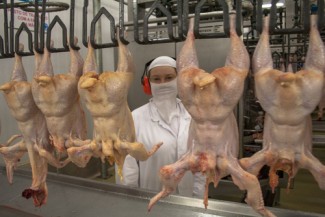Posner ruling tosses Social Security judges' grievance claim, compares them to assembly line workers
The Chicago-based 7th U.S. Circuit Court of Appeals has ruled that administrative law judges for the Social Security Administration can’t pursue a grievance against their agency.
As the National Law Journal (sub. req.) reported, Judge Richard Posner compared the ALJs to workers on “a poultry processing assembly line” in rejecting their claim that high caseloads interfere with their decisional independence.
The union for the ALJs, the Association of Administrative Law Judges, had sued SSA acting commissioner Carolyn Colvin in her official capacity over a policy setting a goal of 500 to 700 “legally sufficient judgments” per judge, per year. According to the opinion (PDF), the union contends that this is really a quota because judges are penalized for not meeting it.
Such a high caseload encourages judges to approve benefits, the union argued, because an approval can’t be appealed, and therefore the opinion doesn’t have to be “appeal proof,” as Posner phrased it. As a result, the union argued, judges are encouraged to find for applicants, and their independence is compromised.
The Northern Illinois district court dismissed this for lack of jurisdiction, saying the union’s exclusive remedy is actually the Civil Service Reform Act of 1978. Posner agreed, but added that the claim would still fail under that law’s standards. Because the union argues that an increase in benefits awards is a side effect rather than a goal of the alleged quota, he wrote, such a quota is not prohibited by the Civil Service Reform Act.
Posner then drew a parallel between the ALJs and a poultry processing worker whose assembly line is speeded up. Work quality may suffer from extra speed in both cases, he wrote, but neither worker’s independence is compromised. If it were, he wrote, the courts would be flooded with workers complaining about “incidental and unintentional” effects of changes in their working conditions.
Posner also noted that caseloads in the federal district courts increased in the 1960s and 1970s, requiring judges to work harder—but that there was no claim for interference with judicial independence.
Dana Leigh Marks, head of the National Association of Immigration Judges, told the ABA Journal last year that the average federal district judge’s caseload is about 440 cases a year, less than the 500-to-700 goal set by the SSA. Marks said the average caseload for immigration judges is 1,500 a year.




